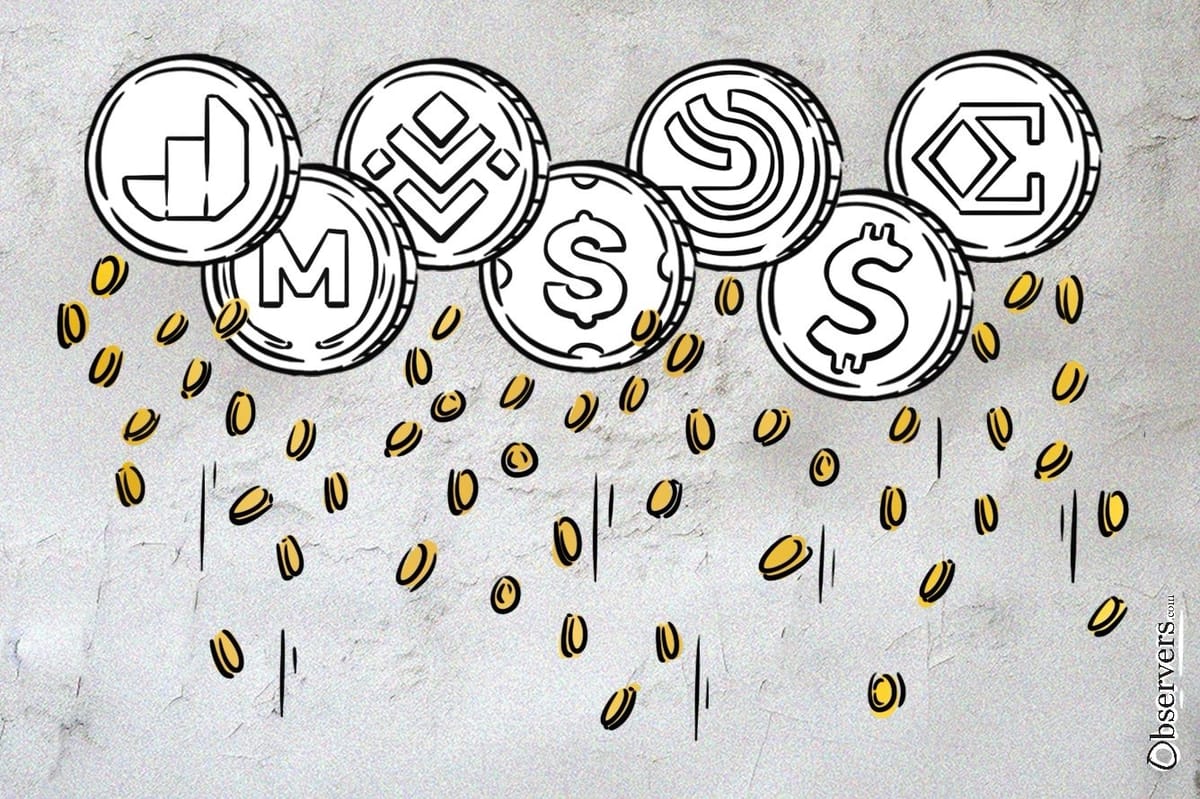
Non-yield stablecoins dominate the asset class's market. Tether's USDT has a market share of 69%, followed by Circle's USDC. Together, they have a market cap of $143 billion, while the market's total is $161 billion.
Until now, stablecoin projects have focused on rectifying the shortcomings of volatile cryptocurrencies by designing protocols offering stability, 24/7 availability, global access, transparency, and confidence in redeemability. The latter became a key feature of the stablecoin design after the collapse of the Terra Luna project.
Tokens fully backed by U.S. Treasuries are an industry standard now. It is a win-win position: the users of stablecoins are happy to have solid collateral backing, while issuers earn lucrative interest rates.
However, high interest rates and increased competition have prompted the emergence of a new product within the stablecoin asset class that, by distributing yield to its users, goes beyond being a means of payment to also act as a reserve of value.
Paxos, the company that was once the issuer of Binance's BUSD, joined the sector last week when it announced Lift Dollar ($USDL), a new currency pegged to the dollar offering a 5% yearly interest deposited into users' wallets every day.
Another project, Mountain Protocol, has issued about 50 million tokens of the $USDM stablecoin since launching in October 2023. $USDM is backed by short-term U.S. T-Bills and offers a 5% yearly yield. Last week, the project raised $8 million in a Series A round.
Martin Carrica, CEO of Mountain Protocol, believes that "the market share of yield-bearing stablecoins will be 80% to 90% of all stablecoin market share five years from now."
$USDX, $USDA, $USDe, $USDY and $USDX are other yield-bearing stablecoins which have launched over the course of the last year.
Not all yield-bearing risk stablecoins are created equally, with the mechanisms that generate interest varying significantly between protocols.
Most projects are simply choosing to pass down the yield they earn through their reserves for owning greenback and short-term government securities. Ondo Finance's $USDY, launched on the Sui blockchain in November 2023, is one of them.
"If you've got, you know, USDC or USDT in there, you're not earning that yield — somebody else is. So you might as well put a yield-bearing dollar in there, it's just much more capital efficient for you," the protocol's COO Justin Schmidt explained in an interview earlier this year.
Other projects opt for having different types of assets in their reserves. However, projects are exploring different models.
From Nic Carter of Castle Island Ventures' perspective, "The status quo we have now where stablecoins have to be backed by short-dated treasuries is a little puzzling. I understand it's a reaction to some of the failures we've seen in the market but I think there's scope for issuers to go towards longer-dated securities that have a better yield characteristic."
The growth of the RWA can also influence the future design of stablecoins as tokenization turns off-chain illiquid wealth into on-chain liquidity, expanding the range of assets that the DeFi projects can use as collateral.
Some projects that also offer a yield to holders are experimenting with managing the peg to fiat currency with on-chain assets. Ethena protocol, which was launched in February, describes itself as the first "Internet Bond" offering a synthetic dollar solution rather than a stablecoin.
Its native stable token, USDe, is backed by "executing automated and programmatic delta-neutral hedges with respect to the underlying backing assets," mainly Ethereum and Bitcoin financial products. This mechanism, together with staking ETH, generates yield, which is then passed down to users.
Stablecoins are useful in serving the needs of millions of users worldwide, and this has led to their becoming the largest asset class in crypto, accounting for over 70% of all transactions in the space. In the past 90 days, their market grew by 11%, with $16.23 billion pouring into fiat-pegged coins.
Consumer appetite for a more advantageous type of stablecoins is big. While fiat currencies didn't have much space to compete and the toolset available for central banks was limited, private issuers have found a vast area for experimentation, and we might observe the emergence of new forms of money from those.

